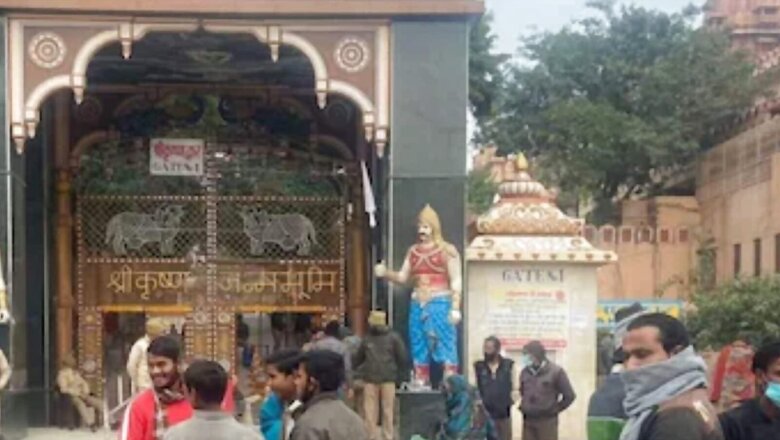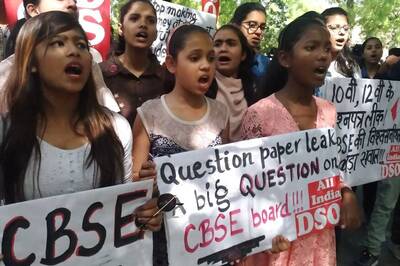
views
In the Gyanvapi Mosque row, the lawyers representing Hindu petitioners said they found ‘Shivling’ in the pond during the court-monitored survey of the complex. The ‘Shivling’ could be the testimony to the fact that there was a temple earlier on the site where a mosque was later built.
Historian have traced constructions across the country over time, which have proven, in some cases, that mosques, dargahs, forts or mazars were built on temple sites. Historian Ram Singh Goyal in his book, ‘Hindu Temples: What Happened to Them’, surveyed around 1,800 Muslim structures, which were constructed using materials from temples destroyed over time. Gyanvapi and Qutub Minar find mention in his book.
An influential figure, Maulana Hakim Sayid Abdul Hai, in his book cited six examples where mosques were built on every site of Hindu temples by Indian-Muslim rulers from the 12th to 17th Century.
Babri Masjid in Ayodhya: Hai in his book, ‘Hindustan Islami Ahad Mein’, said, “This mosque was constructed by Babar at Ajodhya, which Hindus call the birthplace of Ram Chanderji. There is a famous story about his wife, Sita. It is said that Sita had a temple here in which she lived and cooked food for her husband. On that very site, Babar constructed this mosque.”
Fort of Akbar in Allahabad: The fort was built on temple sites. Mazar of Mian Maqbul and Husain Khan Shahid were built on a temple site. Even Lakshmi Narayan Temple was converted to construct Masjid in Patthar Mahalla.
Krishna Janmabhoomi Temple: The Krishna Janmasthan or Kesava Deo temple located in Mathura in Uttar Pradesh is said to be built by Lord Krishna’s grandson Vajra. The temple underwent significant changes during the rule of Chandragupta Maurya II, around 400 AD. The temple was rebuilt by Bir Singh Bundela or Vir Singh Deo, an Orchha king under the Mughal rule, after being demolished in 1017 AD. It was later destroyed by Aurangzeb. The new temple was later built in 1965 and has been embroiled in a long political dispute.
Rudra Mahalaya in Gujarat: The construction of the temple, which started in 943 AD by Mularaja Solanki and completed in 1140 AD by Siddharaj Jaisinh, was pulled apart by Alauddin Khilji. Later, Ahmed Shah I desecrated the temple and the western part was converted into Jami Masjid. Similarly, a mosque built in Dwarka on a temple site in 1473.
Bhojshala in Madhya Pradesh: Raja Bhoj built the temple in 1034 AD in Dhar district in Madhya Pradesh. Bhojshala was attacked by Allauddin Khilji in 1305 AD, and killed 1,200 Hindu students and teachers for refusing to convert to Islam. A Muslim emperor destroyed the temple and converted part of Saraswati Temple Bhojshala into a dargah. Again, Mahmud Shah lay siege to Bhojshala and converted it into a dargah.
Mosques in Andhra Pradesh: Author Sita Ram Goel mentioned nearly 142 sites, including Jami Masjid in Kadiri, Anantpur, Sher Shah Masjid in district Penukonda that were built by converting Ivara temple, Jangam temple among others. Also, Jami Masjid in Rajamundri was built by converting Venugopalaswamin temple in 1324. Gachinala Masjid built on a temple site in 1729 is the latest example from Andhra Pradesh.
Adina Mosque in West Bengal: The mosque derives its name from Adinath temple, depicting Lord Shiva. The Adina mosque was built by Sikander Shah in 1358-90 AD over a Hindu temple. The mosque has remnants of Hindu deities, and the interiors has Hindu carvings. The structure has Ganesh and Nataraj statues.
Bhadrakali Temple in Ahmedabad: Jama Masjid was built by Ahmed Shah I on Bhadrakali temple in 1424 in Ahmedabad. The temple was constructed by Rajput Parmar kings of Malwa (Rajastha). The pillars and carvings of flowers, elephants and serpents and dancers in the mosque represent the typical Hindu temple style. Ahmedabad was named after Ahmed Shah I who captured Karnavati in 1411.
Qutub Minar in Delhi: The giant structure was actually Dhruv Stambh or Vishnu Dhwaj that existed before King Vikramaditya. Around the Qutub tower there were pavilions dedicated to 27 constellations of Vedic astrology. The top of the Qutub Minar has a lotus with 24 petals, which symbolises Lord Brahma. The Quwwat-al Islam mosque built by Qutubuddin Aibak was built after demolishing the temple constructed by Prithvi Raj Chauhan.
Read all the Latest India News here



















Comments
0 comment